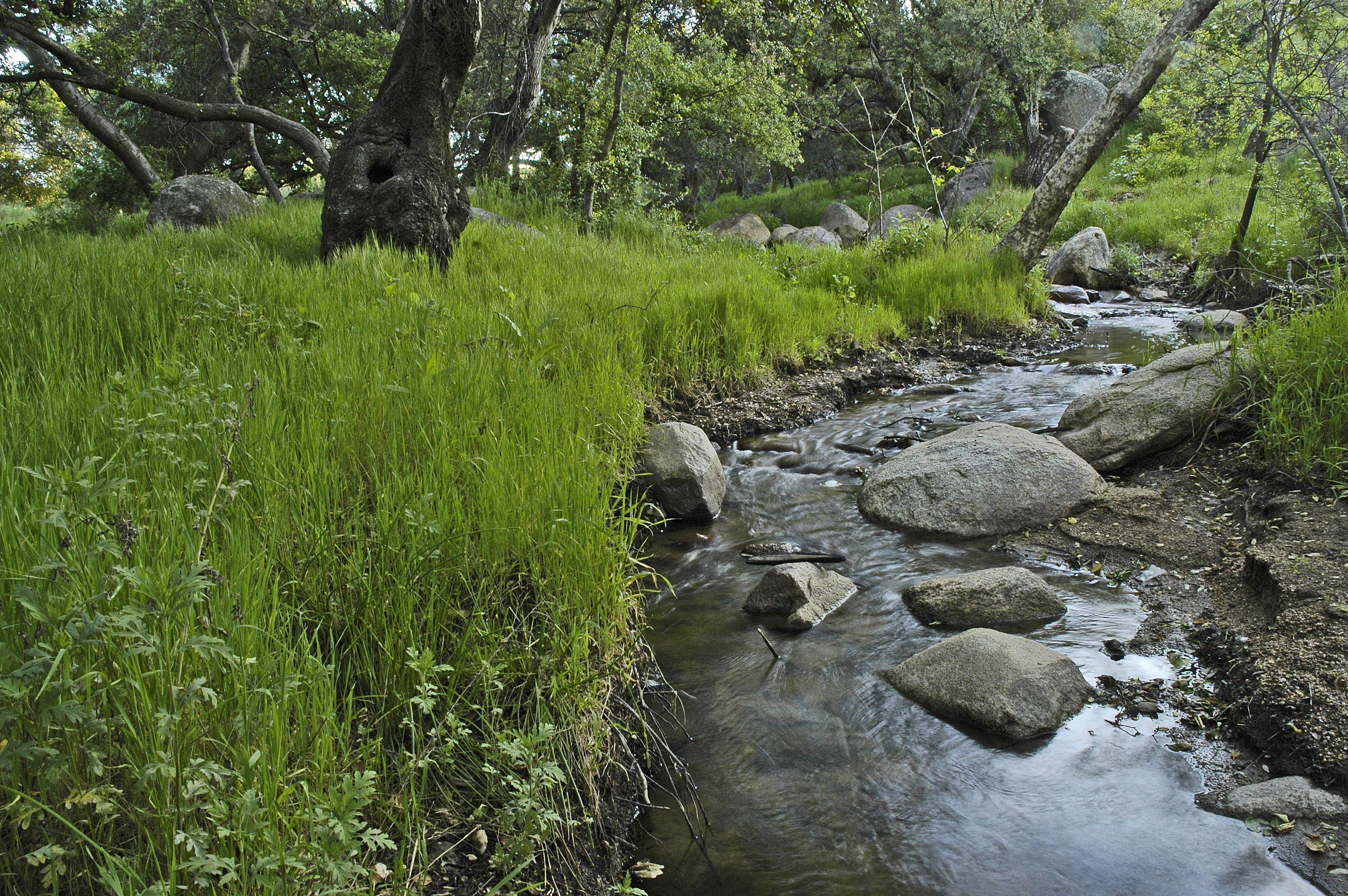Origins of the Ranch Part L

Singing in the rain? Don’t bet on it…but here are a few exceptions
By Peter Jensen
Our valley sees very little rain each year. Over the past 30 years average rainfall on our 3,000+ acres has been a scant (compared to many other areas in North America) 17.02 inches, with measureable precipitation falling only about 40 days per year.
Contrary to being a “desert”—what many magazine writers call our natural setting—we are decidedly not a desert or even near one geographically, unless you drive east for an hour. Still, we’re quite dry: our rainfall is 14.5 inches less than the U.S. national average, if that helps draw a comparison.
At about 1,700’ elevation, we have extensive oak woodlands and grasslands around The Ranch’s accommodations, and as you hike higher into the mountains the vegetation shifts immediately to a chaparral community, with some oaks tucked into the boulder-strewn folds of Mt. Kuchumaa. None of our native habitats are particularly thirsty, but they expect a good rainfall now and then, and nature accommodates in most years.
Our surrounding terrain even hosts a few waterfalls. They don’t spring to life very often, but longtime staff members and guests (especially those who are at The Ranch November-March) have seen slender falls now and then either glistening in the distance like silver threads on the side of Mt. Kuchumaa, or rushing between the oak tree roots in an arroyo that divides the Rancho La Puerta accommodations into an east side and west side.
Co-founder Deborah Szekely recalls a rainy spell long ago when guests on the east side were cut off from returning to the west side (where the dining room was located) for over a day by a torrent—a near-flash flood that didn’t abate. She and Edmond commissioned a suspension bridge soon after, and you’ll still find it in use today; a link between staff housing and the main Ranch…over a dry arroyo.
We have been coming to Rancho La Puerta since 1982, and once saw a week in the late 1990s when Kuchumaa was covered with a dozen or more waterfalls and rivulets. One day we hiked with a staff member and her farm dog (who knew every trail) from the Tres Estrellas fields up the east flank of Mt. Kuchumaa to a broad granite shield. Looking at this shield through binoculars from far below, we saw what appeared to be narrow watercourses as well as glistening mirrors—wet flat granite bouncing sunlight across the valley. We simply had to hike up and take a closer look.
When we arrived at the formation, which covered an area about the size of a football field, we were delighted to discover water gushing inside 6”- to 12”-wide cracks beneath our feet. Could a master Zen gardener have carved a more perfect set of linked channels across the granite, and then—finally—allowed the water to spring free into middair over ledges before rejoining yet more courses on their way to the valley? Not in another 30 million years.
Only fourteen miles from Rancho La Puerta and about 1,000 feet higher in elevation, a remote town on the U.S.A. side of the border experienced one of the most extraordinary rainfall records in history. Here’s a description from the weather-watch Wunderblog by Christopher C. Burt:
“Yet another extreme rainfall worthy of mention is that of August 12, 1891, when the mountain town of Campo, California (located just a few miles north of the Mexico-U.S. border at an elevation of 2,800′) reported an amazing 11.50″ in 1 hour and 20 minutes (and a 16.10″ storm total). The average annual precipitation here is just 14.82″ and in August a mere 0.51″. The observer, a Mr. Gaskill, who was considered reliable, stated that much more rain actually fell but he was unable to empty the gauge fast enough as it overflowed [and] floodwaters undermined the gauge and tilted it a bit. This record has been of great interest to California climatologists since it may represent the most intense rainfall that has ever occurred in the state. The California Department of Water Resources gave it a return period of once in 270,000 years!”
Lest all this talk of rainfall deters you from a visit during our “wet” months of December-March, do consider that those months’ daytime temperatures average in the 60s and are mostly dry dry dry. Bring your bathing suit…but rest assured, you won’t be swimming the arroyo!


